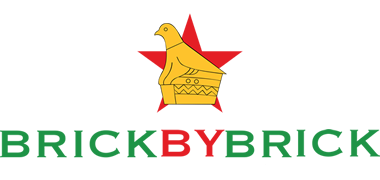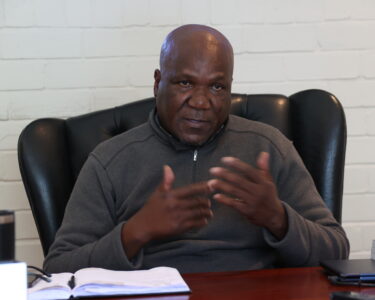Garland Kunodziya, the provincial economist in the Mashonaland West Province’s
Minister of State’s Office, speaks to Brick by Brick’s managing editor, Baffour Ankomah, about the province’s achievements in mining, agriculture, development projects, and everything in-between. He is a young man who suffers no fools.
Q: The Second Republic is almost 5 years old. How would say it has worked in the Mashonaland West Province. You call yourselves Mash Best. What has the Second Republic achieved in this province and what more can it do?
A: A lot of tremendous work has been done already by the Second Republic in our province. For me to summarise it and give you a narrative in a more organised manner, I will have to go through or use the priorities in the National Development Strategy 1.
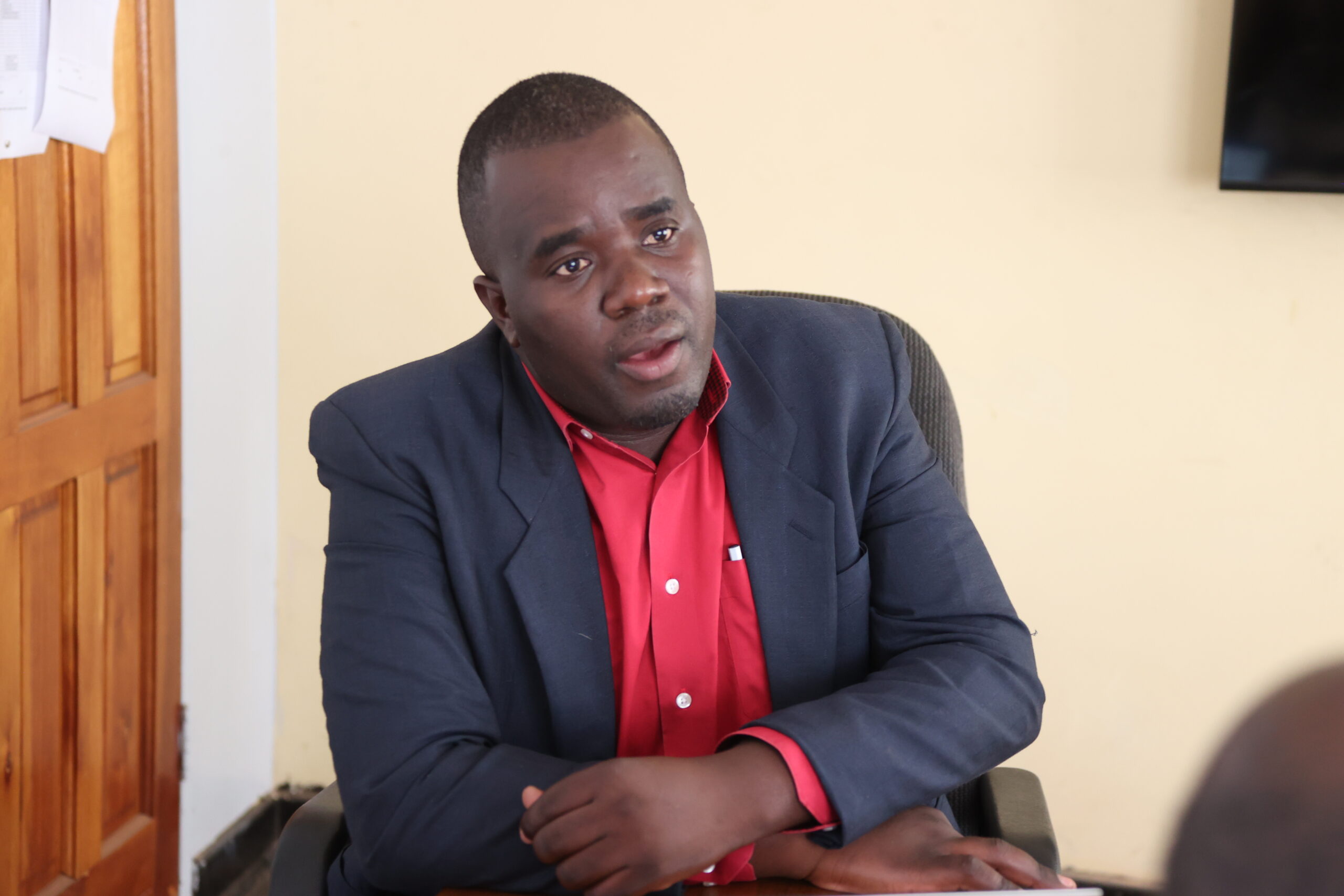
After launching the National Development Strategy 1, President Emmerson Mnangagwa reminded all the ministers and departments to work in the spirit of leaving no one and no place behind. So the first and foremost critical area when you are talking of provinces is the devolution and decentralisation agenda, which is a very important pillar in our National Development Strategy.
Again, another very important critical aspect of our Constitution is that we have ministers of state for provincial affairs who are championing development at provincial level. Here we have the Honourable Minister Mary Mliswa-Chikoka. That appointment alone is an enormous achievement and it shows where we are going as a country and province.
We can then look at infrastructure and utilities under the national priorities. For economic growth to take place, one of the enabling aspects or key is infrastructure.

Q: So what has been the story on the infrastructural front in Mash Best?
A: We have a lot of infrastructural projects that have been implemented by the province. Some of them were implemented under devolution projects and others under national projects, like the Marongora road along the Beitbridge-Chirungu highway, an 8 km stretch that was so bad and accident-prone that it was named “The Hell’s Gate”. But when the Second Republic came, the Japan International Cooperation partnered the government to rehabilitate that deadly section of the road.
There is also another critical road in our province. If you are to go to Victoria Falls, from Harare to Victoria Falls is around 875 km. But there is a short cut to Victoria Falls. You pass through the Harare-Chirundu highway, then after Karoi you turn left and take the Binga road, which takes you all the way to join the Bulawayo-Victoria Falls highway at the Cross Dete turn-off just close to Hwange. Engineers have proven that that road shortens the distance to Victoria Falls by almost 200 km.
So that road is very critical in our province, but from Karoi to Binga the greater part is a dust road. So the Second Republic decided to do this road in a brick by brick fashion. From 2020-2021, we managed to resurface about 10 km of that road. There was no tar on that 10 km, and it was funded locally. No foreign investor. The 10 km was done to Chipane.
From Chipane to Siyakobvu is around 160 km, but what we know about the Second Republic is that because of the importance of that road, we are going to see it reconstructed as we approach 2030. And people will say if you want to go to Victoria Falls, don’t go through Bulawayo, pass through Mashonaland West.
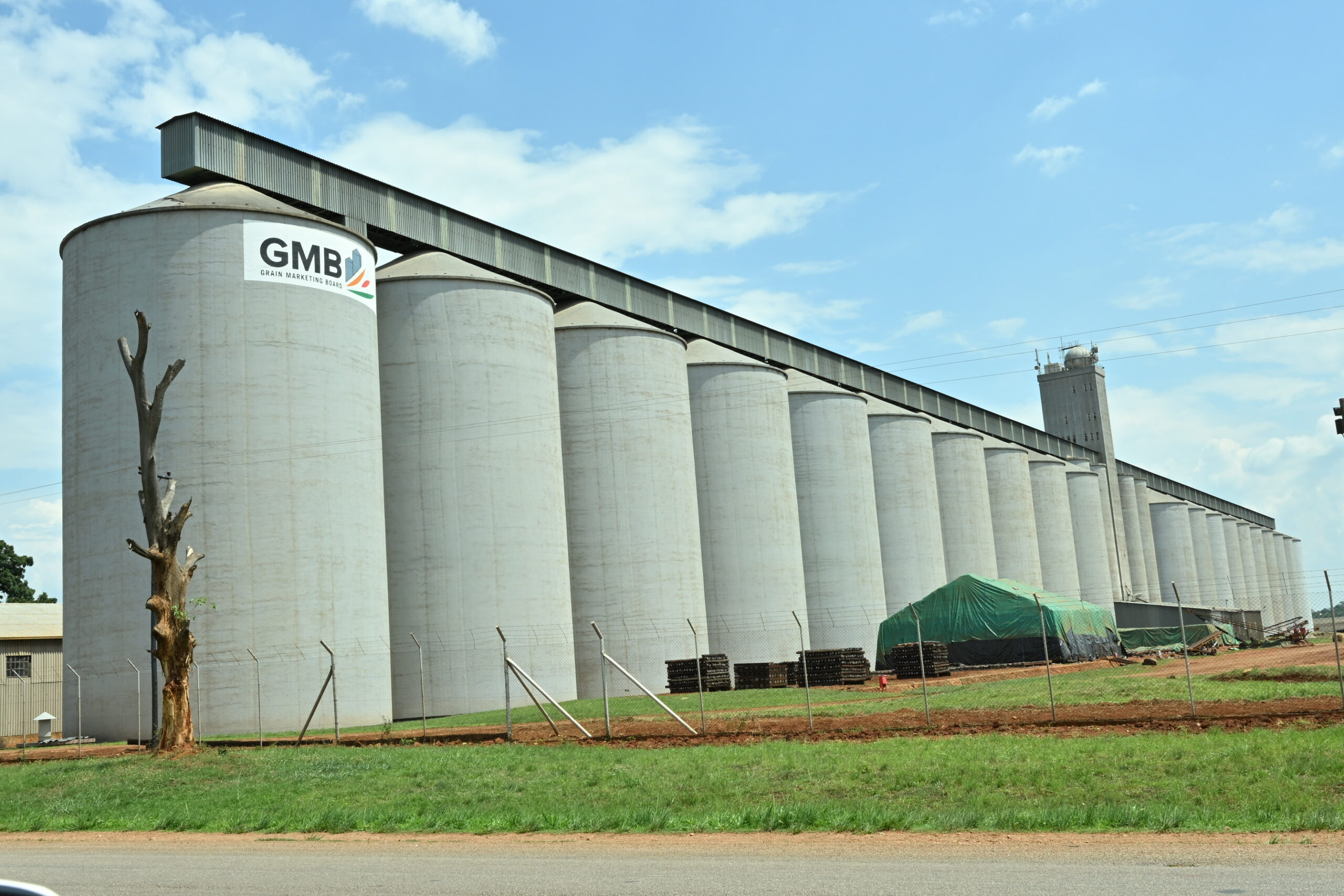
Q: From the Karoi turnoff, how many kilometres is the road?
A: From Karoi to Binga is around 198 km, so out of those 198 km we have around 40 to 50 km tarred, it was done in the 1990s. Then under the Second Republic, the government said “this road is very important, what can we do?” So from February 2021 to around August 2021, they managed to do the 10 km.
But some people will say you are talking about 10 km, what is 10 km? But 10 km is a brick. Next time we will add another brick, which will be another 10 km, which will take us to 72 km. Then maybe in 2024, we will put another brick down which will take us to Siyakobvu.
So by the time we reach 2030, we will be in Binga. I know definitely we will be in Binga. So that’s the brick by brick approach. It is not about saying “no, no, you can’t talk of 10 km”. Remember the 10 km happened when there was competition on road-making resources, especially on the Beitbridge-Harare highway.
Q: But a cynic will say, you are talking about a 198-km road, and you are doing 10 km a year, it will take you almost 20 years to do it.
A: It is not about saying 20 years, it is to say this 10 km was done when ERRP 2 [emergency road rehabilitation programme 2] came in, when the President declared the country’s roads a national disaster. So resources were channeled to almost everywhere in the country, and thus in every district there were roads being rehabilitated. So resources were stretched.
Here in Mash West, we know how critical the Karoi-Binga road is. What we are proud of, as Mashonaland West Province or as Zimbabweans, is that these projects are not being funded by foreign investors or countries. They are funded by local resources. We have done much considering that we are under sanctions.
Moving from roads to other infrastructural projects, there is the Siyakobvu Government Complex, the construction of which had stalled for almost 15 years. The last brick was put on that complex in 2004. So trees were growing on that complex. But in June 2021, Vice President Constantino Chiwenga said “by December 2022 I want to see this complex completed”. Then Public Works was put to task. The block is almost complete as I speak to you. The last time we went there, they were doing the roofing and the balustrading of the staircase.
We also have the Judicial Service Commission Courts here in Chinhoyi. The construction of those courts had also stalled for almost the same duration as the Siyakobvu Complex. But in 2018, the President said “I want this building completed”. And it was completed and commissioned in 2021.
Again, we have the Kadoma Registrar General’s offices, which have also been completed. If we take devolution projects, Zvimba District alone has constructed over 35 classroom blocks, from 2020 to 2021
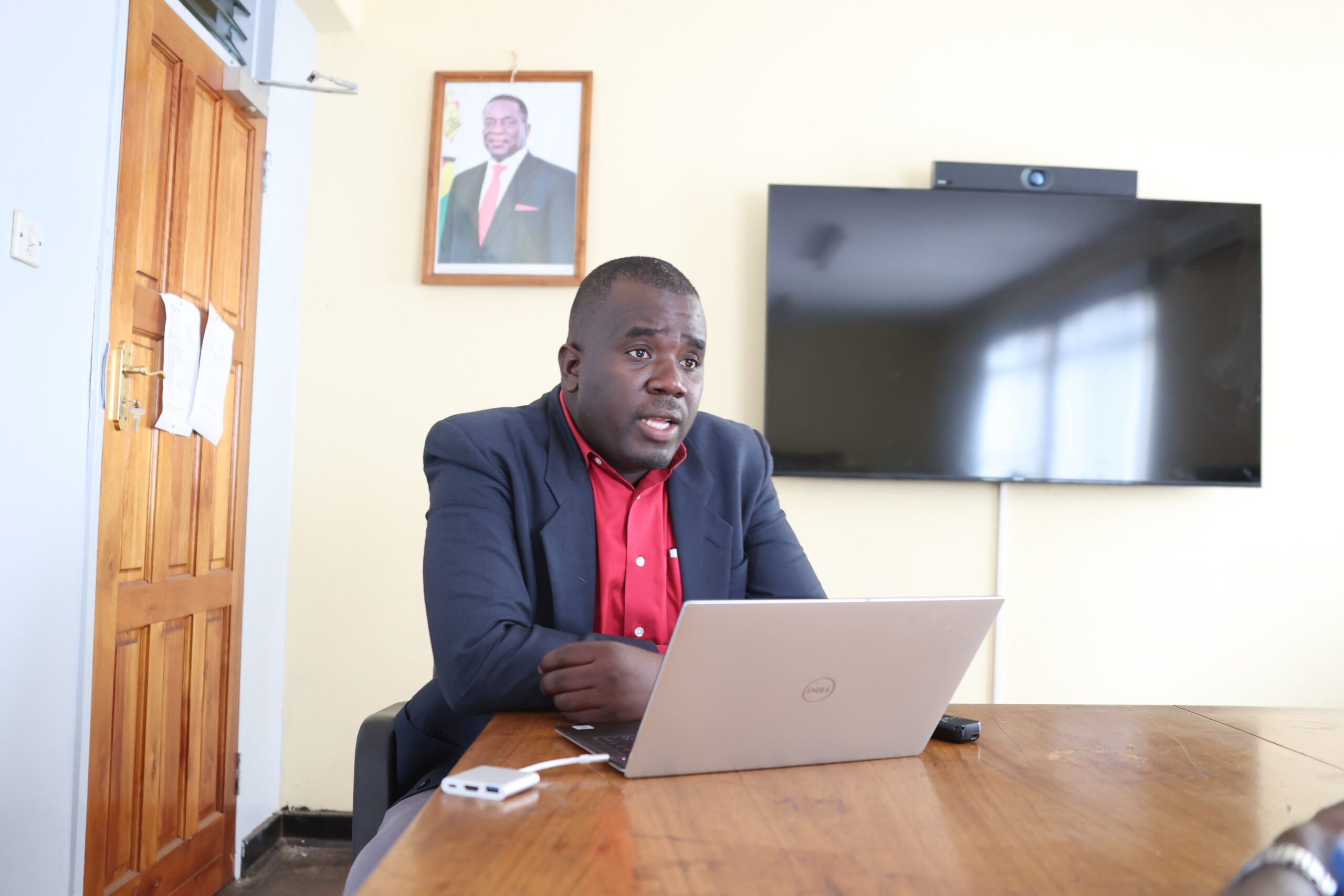
Q: In different places?
A: In different places, in different wards. Out of those 35, I think 25 are now complete.
Q: Are these primary schools or…?
A: Primary and secondary schools. A mixture.
Still on infrastructure, if you go to Kariba, there is a People’s Market, a very good People’s Market, which was constructed by the local authority to house 450 SMEs
Then, in terms of routine road maintenance, under the emergency road rehabilitation programme, a lot of roads were rehabilitated. There was regravelling, resealing, pothole patching, and so on.
In terms of water and sanitation, you know for people to live a better life, one of the critical areas is water and sanitation. Here in our province, we had 3 drilling rigs procured under devolution funding. One for Mondoro-Ngezi District, one for Hurungwe District, and one for Zvimba District (which is yet to be delivered). We also have Sayanti which is buying another rig. They are to drill boreholes in rural areas.
When the districts were buying their rigs, the government did not just sit and fold its arms. In 2022, the government also procured a drilling rig for the province under the ZINWA programme in the Ministry of Lands. That rig is currently in Hurungwe. They are running it under the Presidential Rural Development Programme, which is called 8.0 because it has 8 aspects.
Then if you come to urban areas, most of our urban areas were battling with the challenge of sewer blockage and water provision. So under the Second Republic, money was given under the Public Sector Investment Programme (PSIP) as well as under devolution.
At Chegutu we had almost three wards – Wards 5, 6, and 8 – which were hard hit by cholera in 2008 and water supply was stopped. But under the Second Republic, the government said “no, give people at the grassroots money through devolution”. So the money the local authority got went into those wards – they excavated the sewer line, 6 km in 2021, and for water 4.3 km.
Incidentally these are the areas governed by local people who don’t see what the Second Republic is doing. They are given money to rehabilitate water and sewer at Chegutu. They rehabilitate the sewer line to the length of 6 km, and another 4.3 km for water. That was in 2021. In 2022, they did another 3 km for sewer and around 2 km for water, covering those wards that were affected by cholera in 2008. And yet they claim they don’t see what the Second Republic is doing.
If you go to Norton, they have what is called the Nkoni Sewer Trunk Line. It was also done using funding from the Second Republic. Then here in Chinhoyi, at the Chaidza gravity line, if you had passed through Chinhoyi around the end of 2020, as you approach the bridge you would have smelt sewer coming from the Chaidza gravity line. But it is now a thing of the past. The gravity line was restored.
Then we have the sewer pump station again in Chinhoyi, it was resuscitated. If you go to the water works, they have managed to procure heavy duty water pumps which suck the water to the treatment area. Today, the water challenges have improved.
Then in Kadoma, they did a lot of projects. They have what is called the Pasi Sewer Treatment Plant which was also rehabilitated for sewer and water.
So why am I so keen on these local authorities? Because they are managed by people who don’t see what the Second Republic is doing. We are talking of councilors who claim not to see what the Second Republic is doing even though they are in charge of the projects themselves.
Q: You mean the councillors who are implementing the projects don’t see what they are doing themselves?
A: They are the ones implementing the projects, but on the social media, they would be saying nothing is being done. But I can prove with pictures in my computer that this Pasi Sewer Treatment Plant in Chegutu was done, and this Nkoni Sewer Trunk Line was also done. And these are the areas the councillors appear as if they don’t see.
Moving on from the councillors who don’t see, let me touch on a major achievement here in our province. You can’t talk about Mashonaland West and forget to talk about the food and nutrition sector. That’s our major anchor apart from mining. When we are talking about the provincial economy, we talk of food and nutritional security, a priority area under the National Development Strategy.
Just for interest sake, you know Zimbabwe has 12 or 13 silos – towers that go up. Eight of them is in Mashonaland West. We have them in Chegutu, Banket, Lions Den, and other places. The Lion’s Den silos are the third largest in the world. They have the capacity to store 104,000 metric tonnes of grain.

Q: But do you have enough grain to fill these third largest silos in the world? There is a difference between having the silos and filing them with grain.
A: Aaaah, you know those silos were constructed after thorough feasibility studies had been done, and those studies found that Mash Best had the capacity to fill them with grain. In 2021 alone, we managed to produce around one million metric tonnes of grain. We are contributing 50% of the grain consumed in Zimbabwe.
Q: Is that why you call yourself Mash Best?
A: Yes, we are the breadbasket of Zimbabwe. So 50% of the national grain requirement comes from Mash Best. In the province, the major districts in terms of food and nutrition security are Zvimba, Makonde, Hurungwe, and parts of Chegutu. It is in Zvimba and Makonde, particularly Makonde, where we have our major grain producers. Can we call them the Big 3 or the Big 5? And all these are black farmers, one of them as young as 35 years old.
So in 2021, we managed to produce one million metric tonnes of grain in Mash Best. In 2022, we set a target of 1.1 million metric tonnes, but because of the drought which we faced, we failed to meet our target. We could only produce around 670,000 metric tonnes of maize.
In terms of winter wheat, in 2022 if you followed the media, you must have heard that Zimbabwe for the first time was not going to import wheat. The nation was said to have cultivated 75,000 hectares of winter wheat. In Mash Best alone, if I am not mistaken, we managed to cultivate around 30,000 hectares of winter wheat.
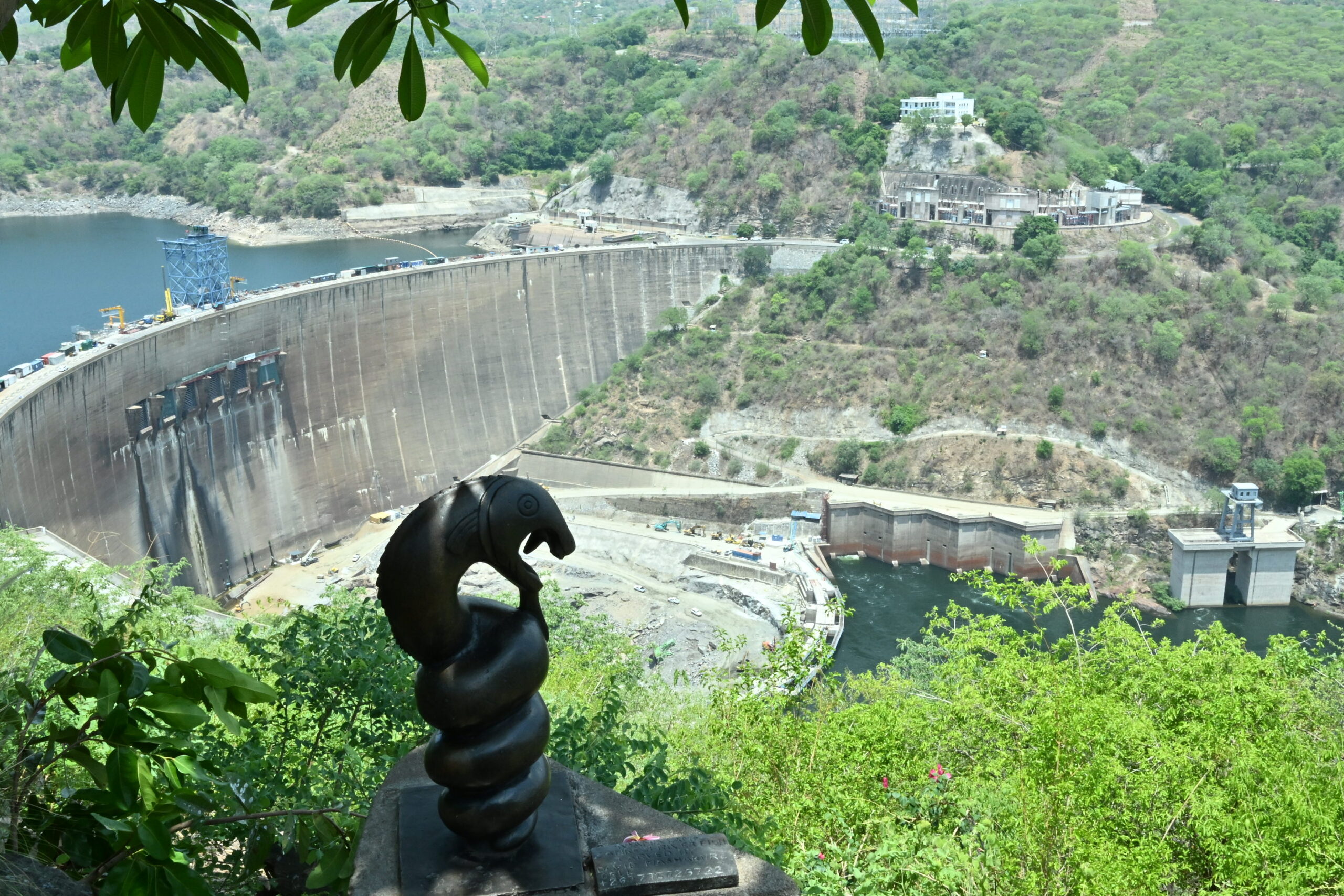
Q: Almost half of the national figure?
A: Yes, that much winter wheat was from Mash Best. And from our assessment, we do what is called crop assessment, and we projected from our first round of assessment to harvest around 100,000 metric tonnes of wheat.
You know why we are very strong in agriculture? We have a lot of water bodies. Zimbabwe is known as the most dam-ed country in Africa. In Mashonaland West alone, a survey found 240 water bodies that could be used for irrigation development.
So in Mashonaland West, food and nutrition is a key driver of the economy. You know Zimstats has started publishing provincial GDPs, and in 2020 our agriculture contributed around 14% of the provincial GDP. Our provincial GDP in 2020 was 133.5 billion Zim dollars, and 14% of that was from agriculture which was number two from mining. So agriculture is playing a very important role and key in this province.
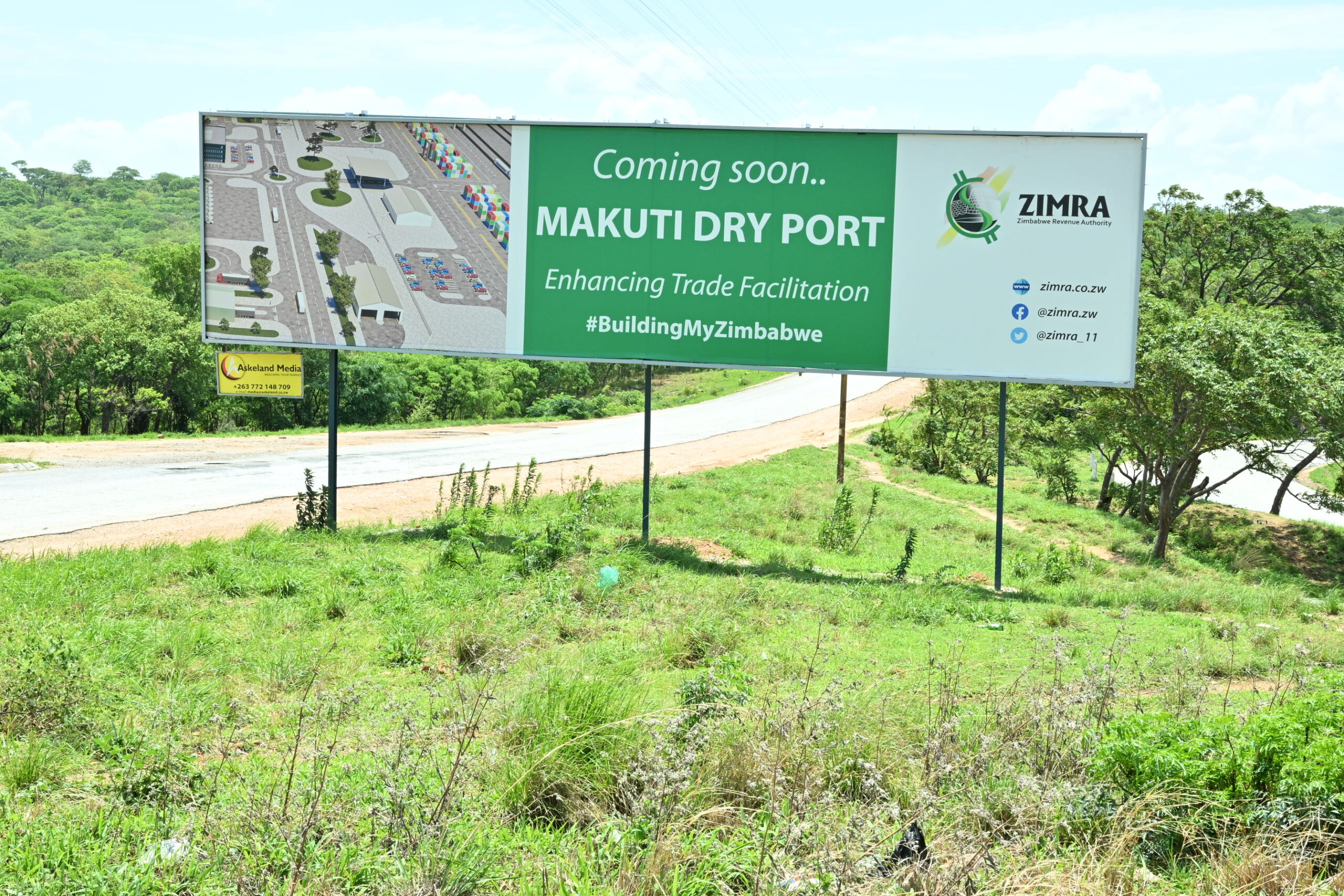
Q: Let me move you on to mining, which is Mash Best’s major strength. What are you doing in mining?
A: We are doing very well in mining. Almost every district here has some sense of mining. Yes, even Kariba has minerals, they have got slates which are used for paving and so on. Slates are mined along the road to Kariba.
Q: How many districts do you have here?
A: We have 7 districts. In Zvimba, we do have gold up to Banket. Then the northern part of Zvimba, we have chrome being mined by Zimasco. We also have Pan African Mining doing gold. Then as you drift to the south of Zvimba, we have the Great Dike Investments where there is platinum mining and exploration. Then we have chrome again around Darwendale. That’s Zvimba.
If you go to Chegutu there is gold. In fact, Chegutu is known for gold. The northern part of Chegutu where it borders Sayanti there is a lot of gold mining. Then as you go towards the southern part, there is some sense of platinum mining. We do have Karoo Resources and Bravura in Chegutu.
Then at Mondoro-Ngezi, we have Zimplats, the major platinum producer. Then at Sayanti, the area which borders Midlands Province, there is a lot of gold mining.
Q: What percentage does mining contribute to the provincial GDP?
A: I will have to check it, but I think it is around 15%, 16%. If you go to Hurungwe District, we do have gold mining around the Chikuti area, and graphite mining at the heart of the district. Then as you approach where Hurungwe District borders the Midlands Province, there is also some gold mining there. Then in Makonde, there is also gold mining. So gold is the dominant mineral in Mash Best.
Q: From your presentation, it looks like this province has no challenges. Do you have any challenges?
A: Yes, we do have challenges. Let’s start from mining. We do have small-scale miners or ordinary people doing mining, and as they are not formalised, this creates its own difficulties. We can’t account for their output. So there is a need not only for formalisation, but also for capacitation of those miners.
Q: Who is going to do it, if not your office?
A: Yes, our office can do capacity development in terms of educating them and facilitating their operations. We do facilitate, whereby we take guys from ZIDA and the Ministry of Mines to go there and facilitate. But what is needed is serious investors who will set up processing plants to add value to the minerals mined by these guys.
But as things stand as I speak, the nation is losing. Those guys are selling their gold to middle men, and the middle men sell to other middle men, and some of the other middle men take the gold to Fidelity while others take it somewhere. And the country loses.
Q: So why can’t the provincial government step in and set up a province-owned company to do what you are saying, if private investors are not coming to do it?
A: We can do it if we are capacitated, but the mandate of the provincial government is to facilitate local economic development.
Q: What other challenges do you have as a province?
A: Another big challenge is that Mashonaland West Province is very extensive. It is a very big province – 7 districts, 14 local authorities. It stretches from West Gate in Harare to Chirundu and Kariba on the Zambian border. And much of it is rural. So the issue of accessibility, despite all the efforts we are making to rehabilitate the roads, is very challenging.
Let me give you an example. In Hurungwe District, we have tobacco production. That is another area where we are very strong as a province, tobacco production. But tobacco is being produced in inaccessible areas of the district. These are small-scale farmers who, in the past, used to ferry their produce to Harare at a high transport cost. Because of inaccessibility and high transport costs, the local black farmers were saying tobacco farming was not profitable.
But when Covid-19 hit the nation and the lockdowns spread, the owners of the tobacco auction floors in Harare made a beeline towards Karoi and established buying deports there. Now there are a lot of those auction floors in Karoi and the farmers don’t need to go to Harare anymore. And we, as a provincial government, are now advocating that our tobacco grown in Mash Best should not go out of the province as a crop. It must be processed into cigarettes in Mashonaland West so that we create jobs.
So accessibility is a challenge. If we go in those marginal areas of the province, they are highly inaccessible, particularly Hurungwe District, part of Makonde, and Kariba. The Siyakobvu area is highly inaccessible, even though it is only 198 km from the Karoi turn-off, which on a tarred road will take just two hours or less, to do the journey.
So, though Siyakobvu is a jewel of the province, you cannot go there, it is highly inaccessible. It is on the shores of Lake Kariba. There is a lot of fishing and very good safari camps. That is where you find Bumi Hills, a resort area. The white people who go there take a flight from Charles Springs. But as blacks, we also want to access those areas because we are also privileged to have entertainment. But if you go there with a small car, you won’t come back with it. You will leave it behind. But there is a lot of potential there in terms of wildlife and fishing.
So all the efforts that are being done in the province are being done on already existing roads, after the presidential pronouncement that roads have become a national disaster. What we need is the opening of new roads.
Q: So how do you plan to resolve this problem?
A: We are actually working on it. For example, when those devolution funds were released, most of the local authorities procured road-making equipment. In 2022, Hurungwe District procured 2 graders and a bulldozer. This equipment is not just for the rehabilitation of the existing roads, they are also planning to open new roads. Makonde District also procured a bulldozer. Chirundu District procured a bulldozer and a grader. If all these yellow machines are put into good use, the problem of inaccessibility will go away as we approach 2030.
Q: Some of the challenges are too massive that they will need national intervention. So what can the national government do to help?
A: We appreciate what the government is doing in our country and province. Having said that, we need continuous capacitation of the lower structures in the provinces – be it in roads, if we can have more money; be it in education, if we can have more money; be it in governance, if we can have more money. If this is done, most of the challenges will go away and the potential of the provinces will continue to grow.
Just for interest sake, Mashonaland West is number 3 when we are ranking provinces by GDP. So if these local structures are capacitated, like what they are doing disbursing funds in the form of devolution and PSIP, we can limit the challenges and increase the potential of the province.
Q: So you are behind Harare and Bulawayo in the perking order?
A: Yes, Harare and Bulawayo are the two leading provinces by virtue of the concentration of economic activities. And this is why we are saying, why can’t milling companies that come to Mashonaland West to buy maize produced by our province, establish milling plants in our province? They buy our maize, process it in Harare, and Harare says it has better GDP figures just because it is selling value-added products made from the maize produced by Mashonaland West. So if these milling companies set up plants in our province, definitely we will surpass Harare in GDP.
This reminds me of the new city at Mount Hampden. It will not be in Harare. It is in Mashonaland West, because that area is Mashonaland West. And we are going to fight tooth and nail for it.
True, the location is in Mashonaland West. But when things take place, you know those guys from Harare, they are cleverer than us and have more resources than us, and influence in high places. You know how West Gate, Kwadzana, Budiriro were constructed? All those areas used to be in Mashonaland West Province. But they are now part and parcel of Harare Province. Now we are saying the new city is in Mashonaland Province. Then what will happen to our GDP? It will surpass Harare’s. We will have the new city alongside agriculture and mining.
Q: You have mentioned GDP a lot, so how much are you talking about in Mash Best?
A: When we crafted our provincial economic development plan in 2021, we looked at the trend from 2014, because provincial GDP started from 2014 to 2019 indexed in US dollars. So our projection was that in 2021 our growth would be around 5%. In 2022 we projected our growth to be 9% but because of the advent of the Russian-Ukraine war, and the drought and the micro-economic challenges at national level, we are going to review down our growth rate.
To speak of our growth rate, the challenge that we are having is that from 2014 to 2019, we had US dollar-indexed provincial GDP, then 2019-2020 they were indexed in Zim dollars. So our appeal is that Zimstats should improve in giving these figures. We as a province, we don’t have the mandate to calculate our GDP because it won’t be recognised. So we rely on Zimstats to do the job.
So, in 2019 our provincial GDP was around 80 to 90 billion Zim dollars, then in 2020 we were at 133.5 billion Zim dollars, then in 2021 because of good agricultural harvest, we are projecting it to be around 150 to 160 billion Zim dollars.
In 2022, because of drought and the exchange rate variation that the country suffered from in the first half of the year, we know that we will slow down. But our projection, if in 2021 we were at 133.5 billion, our 2022 GDP should be around 150, 155, 160 billion Zim dollars (in US dollars, about 65 million). That is what we are projecting.
Q: Let’s finish by you talking about your flagship projects in the province?
A: Let me just mention them. We have the cannabis project [in Nyabira]. We have the milking parlour at Gwebi College. We have the Great Dike platinum exploration project. If it works well, it will change the economy of the Zvimba District.
Chegutu, we have the Agri Value Chain (AVC) cotton ginning plant, brick factory, quarry, PP hospital, and best of all the resuscitation of David Whitehead Textiles. These are massive projects that will greatly impact lives in Chegutu and beyond. We also have the sewer project which is being implemented by the Chegutu Municipality.
In Makonde, we have copper smelting. There is another one at Mangura, they haven’t started yet. It is also copper mining. In Hurungwe, we have the SinoHydro Alaska-Karoi power transmission rehabilitation project.
Then in Kariba, we have the Siyakobvu Government Complex, and the reshaping of the Kariba Dam’s plunge pool, which is a big project in the province. If you go to Sayanti, we have the Registrar General’s Office. In Kadoma, we have the Biological Oxidation Plant established by RioZim at Cam & Motor Mine, which is of high impact nature. We do believe that it is going to transform the livelihoods of people.
Then the Karoi-Binga road, to us is a flagship project. We know that the moment that road is completed, people going to Victoria Falls will stop going via the Harare-Bulawayo Road, they will come through here and on to the Karoi-Binga Road.
Q: But you are doing that road too slowly.
A: You know what happened, it was implemented at national level and considering that there were other priorities on the Beitbride-Chirundu Road, the Karoi-Binga Road could only be implemented at a slower pace.
Then, we have the Marongora Hell’s Gate project. We know that when the Ministry of Transport finishes the Beitbridge-Harare Road, they will be coming to our road – the Harare-Chirundu Road. That one is a flagship project because they have already put a stamp on it.
We do have other projects in Chirundu itself, they are expanding an aerodrome there so that bigger planes can land there. They also want to do 400 hectares of citrus in Chirundu. The Sabo Citrus project is impacting the locals.
Remarkably, most of these projects, save the roads and government complex, are being implemented by private sector players because the Second Republic has created an enabling environment for doing business. The Cyber City in Mount Hampden is a flagship project being implemented by a private investor. Then we have the other one in Mapinga.
Q: So, for all these wonderful things you have talked about, why are there people who still say the government has done nothing or not doing enough? What do you say to such people?
A: Let me tell you this point blank: Those people know what the government is doing, but they have an agenda they want to push. For some time, we, as the government, were very silent about what we were doing, so these people saw a loophole and raised their flag, saying the government is not doing anything.
For example, if we post on the social media a road or project that we have done, those people try to divert our attention, by asking, “are we going to eat the road”? Or if we say we have commissioned this or that project, they say “it is not in Zimbabwe, you have photoshopped it”.
So those people have an objective and an agenda. But their agenda will not pass, because we now have the Brick by Brick magazine talking about Zimbabwe’s achievements. It’s not a joke.
So from my perspective, those guys want to mislead the people, and you know we are heading towards elections, so they think if they mislead the people, the general public will now say this government has failed. But people at the grassroots level who interact with us on a daily basis, who don’t go on the social media, are seeing results.

